[Editor’s note: This is the second of a series about the cedars of British Columbia, their vital role in this place’s ecologies and people working on ways to save them. Read the first instalment here.]
Tla-o-qui-aht Elder Joe Martin slows his motorboat around an eastern fin of Meares Island into Cis-a-qis Bay. “Can you see it? Can you see the cabin?” Martin’s friend Leigh Hilbert asks, pointing out a silver speck in the distance. We coast on the glassy inlet, anticipation swelling with the rising tide. Then, I can see it: a hand-built wooden dwelling beneath a curtain of cedar leaves. Nailed to the shake siding is a small green stop sign with the words “Log for the Future — Stop Clearcuts.”
“Welcome home,” Hilbert says to himself.
Martin throws his anchor at a stone campfire ring and leads us, along with his daughter Gisele Maria Martin, inside the cabin. The floorboards creak as he and Hilbert look for signs of wear. A cupboard door broken off at the hinge is carved with a moon symbol. Gisele explains that sun and moon crests often represent iisaak, an important Nuu-chah-nulth law, which is a verb meaning “to observe, appreciate and act accordingly.”
Martin and Hilbert stop at a display of sepia photos, warped by time and water. Memories start flooding in. Of Martin’s late father, Tla-o-qui-aht Hereditary Chief Robert Martin, who lived at Cis-a-qis for three months with his partner. Of the Martin men carving dugout canoes from downed cedar logs where their ancestors once did. Of Hilbert doing media briefings via two-way radio between handling helicopter drop-ins from the logging company. He shows us the wood stove that warmed those who joined the effort, sometimes 30 in this small space. “There were sleeping bags side by side by side,” Hilbert says. “We were here for the entire winter. We were determined.”
Gisele, who was only seven during the winter of 1984-’85, remembers lots of singing. “What in the world can we do? I’ll hug a tree, won’t you?” she starts performing, reciting the chorus of one of the “Songs for Meares Island,” which eventually became a cassette tape. “There were people from all over who came here,” she says. “That strength and unity was really warm.”
A decade before the 1993 Clayoquot Sound blockade, known as the War in the Woods, gained international attention and set off a chain reaction of efforts to protect B.C.’s old-growth rainforests, a quieter resistance was taking root here, a 30-minute boat ride off Tofino on Wah-Nah-Jus Hilth-hoo-is (Meares Island). It’s not as well-known as the Kennedy Lake Peace Camp, where more than 900 people were arrested. And neither it nor the War in the Woods ended old-growth clearcuts. But it’s a good example of Indigenous and non-Indigenous people working together to defend ancient forests.
Such alliances are being forged again — even as the B.C. government’s newly-announced framework for timber harvesting pledges to prioritize biodiversity and consultation with First Nations. The government's response to the report doesn't go nearly far enough, say critics, who may find lessons in past efforts to preserve the forests and watersheds of Clayoquot Sound, a struggle waged before some of them were alive.
Showdown at Meares Island
Hilbert and Martin met in the 1970s working for MacMillan Bloedel, a multinational timber company that was once the largest private corporation in B.C. Hilbert moved from Seattle to Tofino in 1974 to take a forest engineer job designing logging roads and cutblocks around Clayoquot Sound. He recalls driving in front of the road-building crew and passing one mammoth tree after the next as they penetrated deeper into the forest. Just as he was taking in the majestic trees, ancient cedars and firs dropped behind him like bombs.
He knew how rare this temperate rainforest was — covering less than 2.5 per cent of the planet to begin with — but it was the sheer size of the trees that floored him. He says he remembers coming across two enormous red cedars near Whitepine Cove. When he wrapped his survey tape around the butt of the largest one, the tape read 24 feet, eight inches (about seven metres) in diametre.
“Now that’s a great-great-grandmother tree,” Hilbert said. “I had never seen anything like it. I thought, we can’t be cutting this down. You can’t replant a temperate rainforest.’”
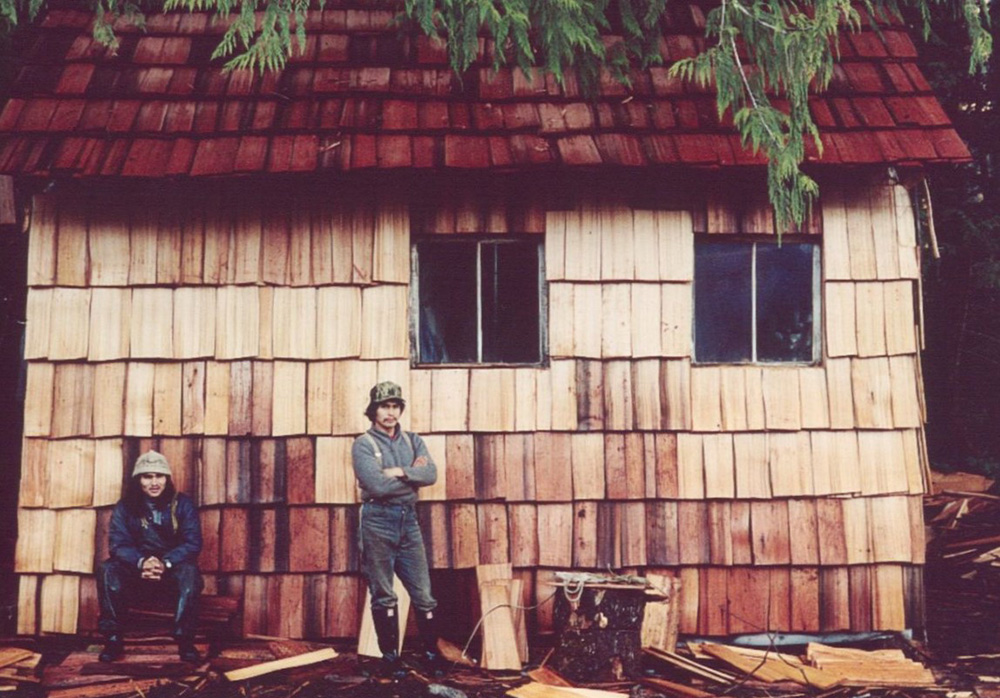
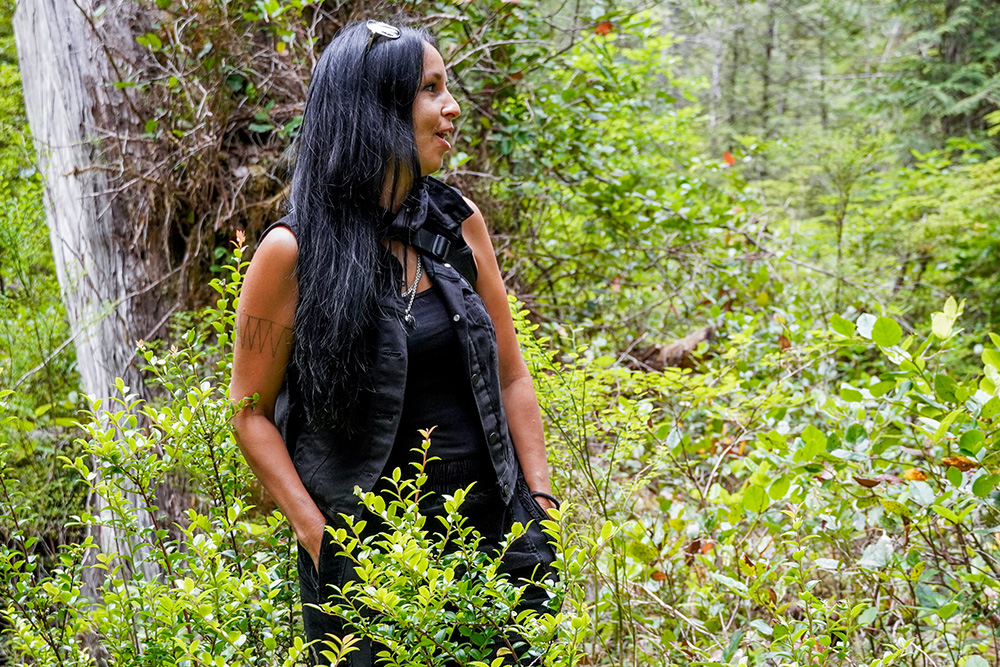
Hilbert quit his job exactly a year after starting, but he still had access to the company’s logging blueprints, which he shared with people like Joe Martin and members of the newly-formed environmental group Friends of Clayoquot Sound. On the chopping block was Meares Island, an 8,500-hectare landmass that was home to some of the province’s largest red cedars, all of Tofino’s drinking water and Nuu-chah-nulth nations whose cultural lifeways connect back thousands of years.
When local businesses, First Nations and environmentalists reached a stalemate with MacMillan Bloedel and the B.C. government, a new idea sprouted: an encampment at Cis-a-qis (Heelboom) Bay. It was here that the Tla-o-qui-aht and Ahousaht First Nations declared Meares Island a Tribal Park in April 1984. And according to MacMillan Bloedel’s blueprints, the bay would be the start of a new logging road into the heart of the island’s old growth. Hilbert sketched out a cedar-shake cabin, nestled between two living cedars, to monitor the entrance.
“People like to talk about the old-growth red cedar, but the entire forest is important,” Martin says, as we adjust our eyes to the amber green foliage outside the cabin. “You see on the ground here, it’s the leaves from the cedars, the hemlocks, the spruce and everything else, including these salal berries. It’s the salmon and all the creatures that help feed the forest. It’s all connected.”
“A lot of the streams would have small cohos in them, scurrying up in October and November,” he adds, gesturing to the babbling creek nearby. Bears, wolves, eagles and ravens scatter salmon carcasses across the forest floor, injecting the soil with nitrogen that literally helps trees grow. Martin ultimately got fired after 12 years at his forestry job for refusing to drag two logs across a salmon-bearing stream. “Thousands of these streams had those fish in them and got destroyed,” he says.
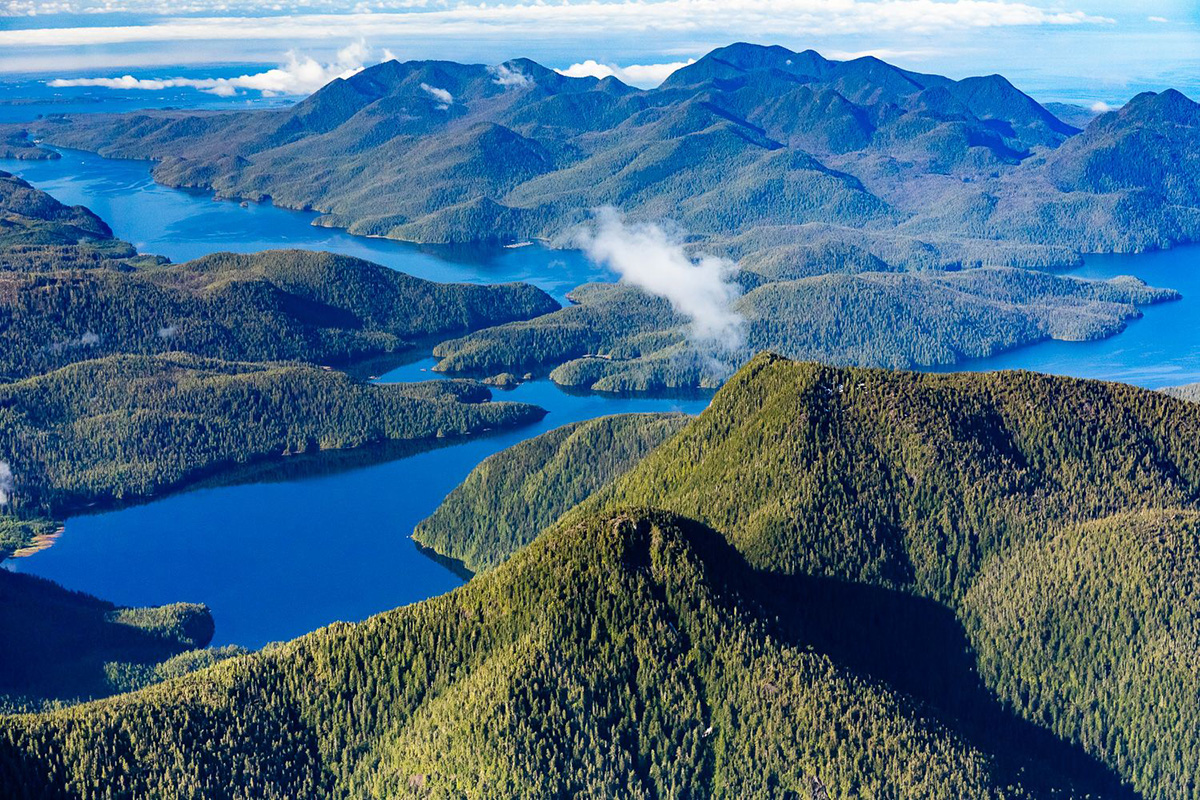
The thought of large-scale destruction on Meares Island — more than half of which was slated, as a compromise, for $25-million worth of logging — galvanized a diverse cross-section of society to join the protection effort. Tofino doctors, lawyers, business owners and town councillors joined forces with Nuu-chah-nulth leaders and nature-loving drifters like a Greenpeace campaigner known as “Seattle Steve.” Money and legal aid started flowing in. So did supporters from Haida Gwaii and California, and media from all over the country. Nothing went ahead without the blessing of Tla-o-qui-aht hereditary Chiefs and Elders as well as elected Chief Moses Martin.
Moses (who’s back in the same role today) starred in a historic standoff on Nov. 21, 1984. According to some outlets, more than 200 people were present on the beach and in the water trying to block MacMillan Bloedel’s 40-foot boat from sailing in. When nine forest managers and three fallers armed with chainsaws landed on the island declaring their right to the tree-farm license, Moses read his own declaration of Tla-o-qui-aht rights and title. Then, with a sweep of his arm, he invited the workers into the Tribal Park for a meal, but only if they left their chainsaws on the boat. “Moses said, ‘You’re not allowed with your chainsaws,'” Martin recalls. “This is our garden.” The crew returned to its vessel.
“Our great-great-great grandparents didn’t leave behind churches or castles,” says Gisele, a Tribal Park guardian and educator. “They left behind biodiversity.” She tells me she once presented on a panel at a wilderness conference in Spain, and every Indigenous representative expressed the same intergenerational care for their environment. “We don’t have a word for ‘wilderness’ in Nuu-chah-nulth languages,” she adds. “The closest translation is ‘home.’”
‘The forest is still standing’
Forest defenders successfully warded off MacMillan Bloedel’s road building and tree harvesting until March 27, 1985, when the B.C. Court of Appeal ruled that no logging could take place on Meares Island until Indigenous land claims had been settled. It was the first court injunction preventing logging in B.C. history. It’s still in effect today.
“The forest is still standing. That’s the biggest and best thing that happened about [Meares],” Martin says. “And I think it inspired people across the country to stand up for their rights.”
Several more logging blockades and court cases followed, leading up to the face-off at the Kennedy River Bridge near the Ucluelet-Tofino junction in 1993 — still considered one of the largest acts of non-violent disobedience in Canadian history. (See sidebar for key events in the battle over old-growth logging during that time.)
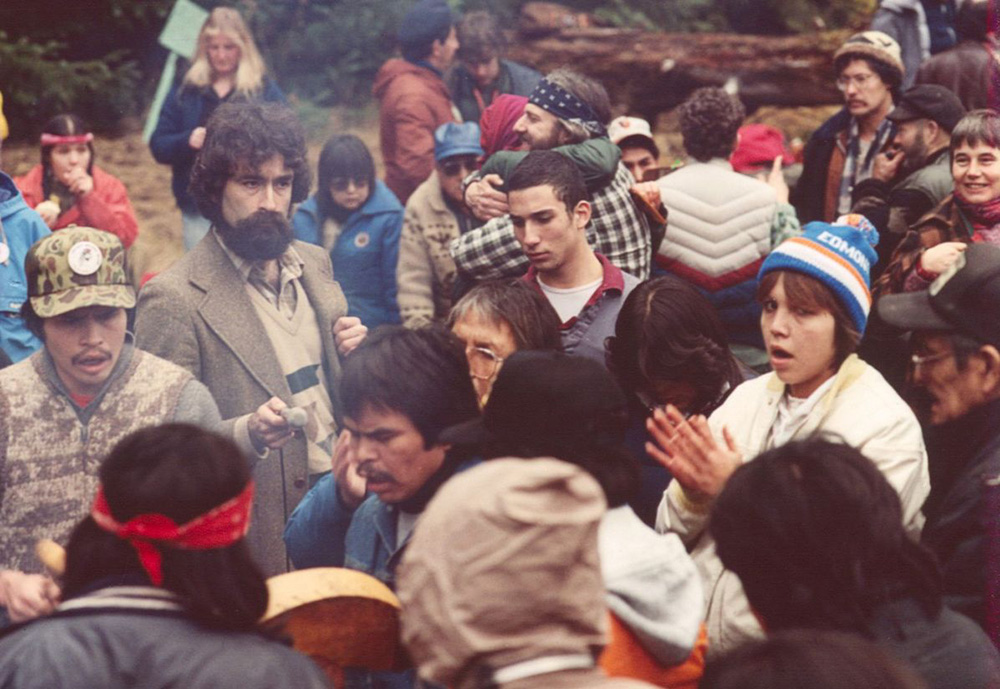
After the War in the Woods, the environment took a short sigh of relief. The Forest Practices Code became law under the NDP government in 1995, bringing in new regulations for cutblock size, road building and buffer zones for salmon habitat. The Forest Practices Board was created as a “watchdog” to ensure proper management of B.C. forests — 95 per cent of which are on public land. Strategies were in the works to double the amount of protected ecosystems from six to 12 per cent, guided by regional land-use plans for places like Clayoquot, which paved the way for the Great Bear Rainforest Agreement years later.
Yet, a crusade by industry to weaken regulations, followed by the shift to a Liberal government all but eroded the Forest Practices Code, which was soon replaced by the Forest and Range Practices Act. Oversight was outsourced to “qualified professionals” working for timber companies — effectively privatizing public forests. From 2004 on, conservation could only happen “without unduly reducing the supply of timber.”
The Liberals also scrapped two measures that supported local economies: a condition requiring companies to process logs in the region they were harvested and a program that would have provided funds to build a value-added industry. All of this opened the door to raw-log exports, the shipping of unprocessed logs to the highest bidder overseas, which doubled on the coast between 2000 and 2016. During the same period, 44 mills shut down and 32,000 forestry jobs were lost.
David Zirnhelt — a rancher and former horse logger who worked as forests minister under Glen Clark in the late ’90s — says he’s not surprised that the industry is still reliant on logging old-growth forest, defined by the province as containing trees that are more than 250-years-old on the coast and more than 140 years in the Interior. Older trees bring in higher value with their higher volume, and they don’t require the same investments as a second- or third-growth industry.
“Second-growth forests always cost more than the free, God-given old-growth stands,” Zirnhelt says. “The transition is the most difficult thing. It’s what stops us every time from doing what’s right.”
A quarter of the annual harvest, or half of everything logged on Vancouver Island and the coast, is old growth. Red cedar — the most valuable tree species in a lumber market that’s currently booming due to pandemic-inspired U.S. home renovations — is of particular importance to the industry.
Red cedar is currently selling for US$1,600 for a thousand board feet, which is double the price of spruce, pine and fir, says Jeff Bromley, wood council chair for the United Steelworkers union. “The value it provides and the overall size of the timber itself is immeasurable to the economics of the industry,” he says.
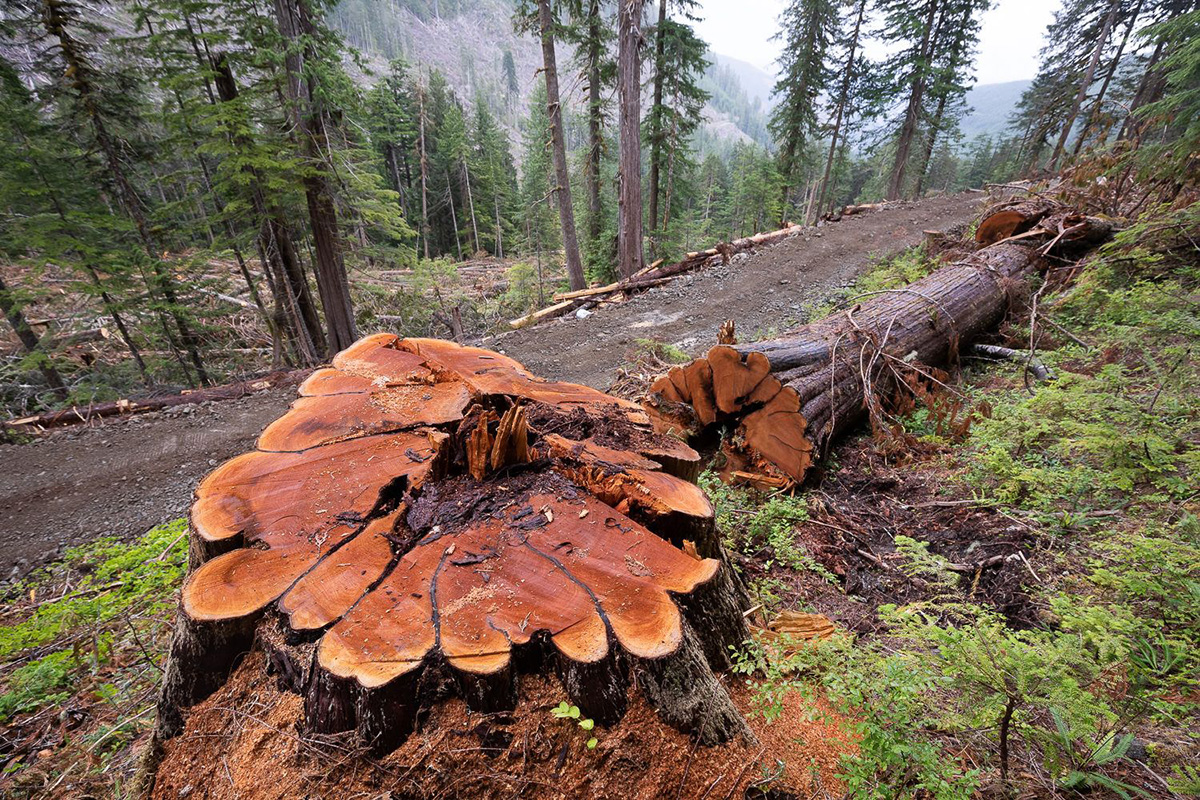
But growing awareness about how little old forest is left has ignited a new push for protection. In 2016, the Union of B.C. Municipalities — representing more than 150 city, town and regional governments — passed a resolution calling for an end to old-growth logging on Vancouver Island. The Public and Private Workers of Canada passed a similar measure the following year. In 2018, more than 220 international scientists signed a letter urging the province to conserve its globally-rare temperate rainforests for the sake of the planet. Several First Nations have rolled out conservation strategies focused on the red and yellow cedar forests so integral to their cultures.
This August, a pair of Nanaimo men held a two-week hunger strike calling for a moratorium on all old-growth logging. Just as they started eating again, a new blockade formed around the Fairy Creek headwaters of southern Vancouver Island, which has made the same demand. This week, a grassroots group known as Forest March BC is holding an online summit to build a “new forest framework” leading up to a province-wide day of action this Friday, Sept. 18.
A study released in June has provided new fuel for the forest conservation movement. It found that of the 13.2 million hectares of remaining old growth in British Columbia, less than three per cent still contains the monumental trees that most people picture when they think of old-growth forests.
“These ecosystems are effectively the white rhino... they are almost extinguished,” the study states. And because of the disturbances and shifts predicted with climate change, they “will not recover from logging.” The authors recommend an immediate logging moratorium in regions with less than 10 per cent old forest remaining as well as ecosystem-based management to retain the most productive, ancient and intact stands.
Last Friday, the NDP government — whose 2017 campaign promised a science-based approach to old-growth management — released its much-anticipated Old Growth Review Panel report, which calls for a “paradigm shift” that prioritizes ecosystem health over the timber supply. Following the passage of the Declaration on the Rights of Indigenous Peoples Act last fall, the report lists Indigenous involvement as recommendation number one.
Coinciding with the release, Forests Minister Doug Donaldson announced the deferral of old-growth logging within 353,000 hectares as well as the protection of up to 1,500 giant trees. The ministry said about 200,000 of those hectares are considered old growth, which is 1.5 per cent of B.C.’s total mature forest and roughly the same amount that’s currently harvested every year.
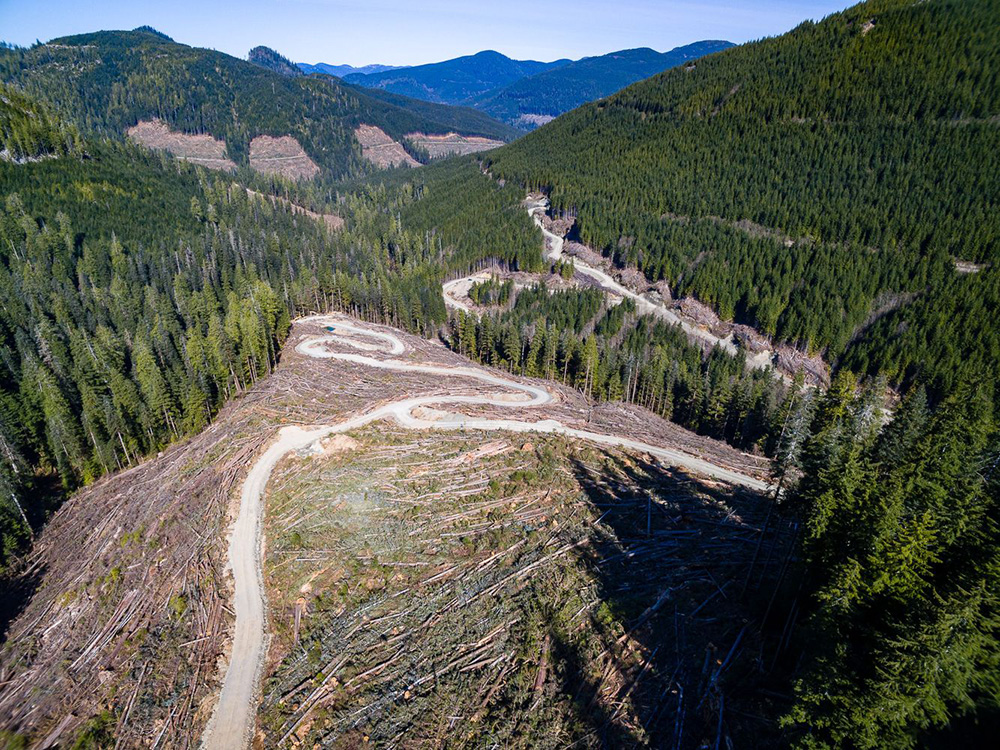
While some environmentalists, foresters and Indigenous representatives have applauded these first steps, they say they leave out critical funding commitments as well as the most at-risk and biodiverse forests, including the Fairy Creek watershed near Port Renfrew in Pacheedaht territory, where blockades have been preventing the construction of new logging roads for more than a month.
Michelle Connolly, director of the volunteer-run community group Conservation North in Prince George notes that none of the deferral areas are at immediate risk of biodiversity loss, despite the independent report’s emphasis on preserving the most endangered ecosystems. Crystalline and Stockdale creeks as well as most of Clayoquot Sound — which makes up nearly three-quarters of the moratorium — are already less vulnerable to old-growth logging because of Forest Stewardship Council certification.
“B.C. has failed to meet a basic and straightforward recommendation by scientists and their own appointed panel, which is to stop harvesting the rarest old-growth forests immediately,” Connolly says.
At Friday’s press briefing, Donaldson said he won’t make any more deferrals until the ministry consults with First Nations, some of which benefit from forestry. “It would be presumptuous of us to declare other deferral areas until that full discussion and agreement with First Nations... has taken place,” Donaldson said. “That would run counter to what our government’s approach has been to reconciliation.”
Left out of the report and announcement, however, are the deep cultural ties between First Nations and red and yellow cedar, along with the decades of direct action that many have endured to protect old-growth forests, right up to a Haida standoff over cedar last year.
In a statement sent to The Tyee in August, the ministry said it recognizes that First Nations have a spiritual and cultural connection to red cedar. Cedar stewardship has been part of some land-use orders in places such as Haida Gwaii, the ministry stated.
“The first step is government-to-government engagement and consultation with First Nations before any decisions are made on the recommendations in the report, which may involve management of western red cedar,” the statement said.
For now, some are celebrating the deferral news for Clayoquot Sound. Clayoquot — an anglicized version of Tla-o-qui-aht, which contains a root word meaning “moving and changing behaviours and emotions” — is a place where Indigenous leaders and allies have stood up time and again to protect their lands and waters, and the creatures and humans that rely on them. It’s a place where humans are a keystone species in those lands and waters. It’s a home to cultures that teach the law of iisaak. Observe. Appreciate. Act accordingly.
“We have a role as human beings, just like bears have a role and wolves have a role,” Gisele Maria Martin told me, standing close to the cedar cabin where a small group of individuals lived for a winter to protect Meares Island.
“We need to come home.”
From Monday: Read all about B.C.’s amazing official tree, the red cedar.
Coming Friday: The revived movement to stop old-growth clear cutting in B.C. is not mom and dad’s War in the Woods. Meet some of the new faces of the modern forest rebellion. Read it here. ![]()
Read more: Indigenous, Labour + Industry, Environment



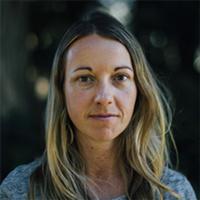

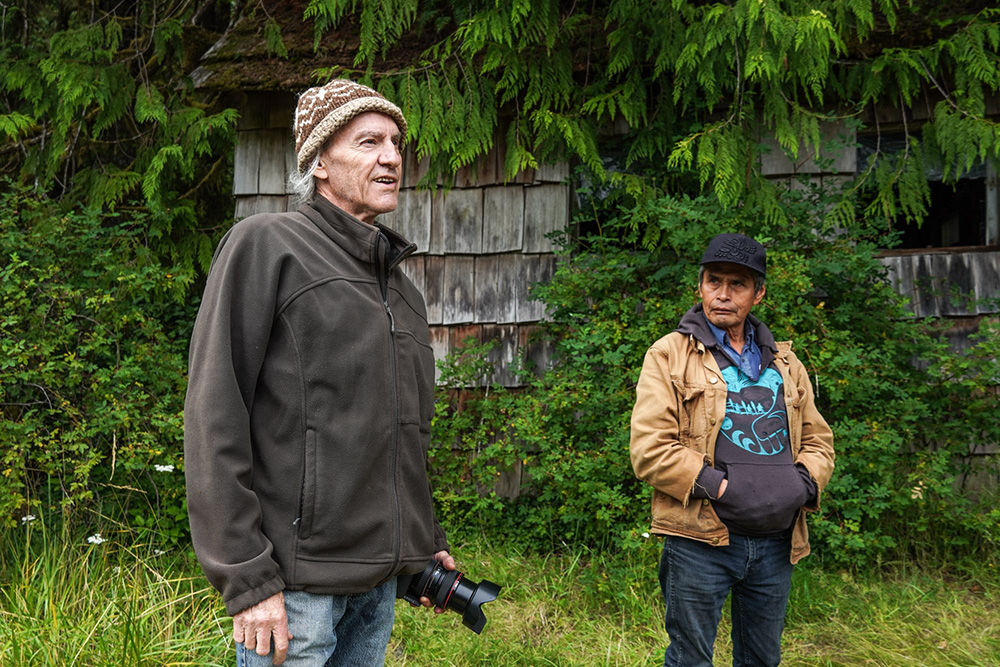
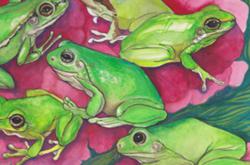
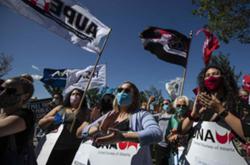
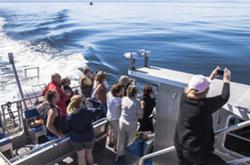
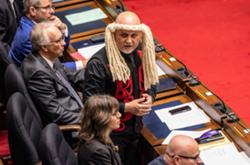
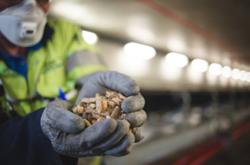
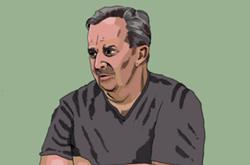
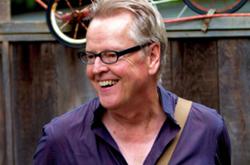

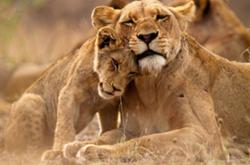



Tyee Commenting Guidelines
Comments that violate guidelines risk being deleted, and violations may result in a temporary or permanent user ban. Maintain the spirit of good conversation to stay in the discussion.
*Please note The Tyee is not a forum for spreading misinformation about COVID-19, denying its existence or minimizing its risk to public health.
Do:
Do not: